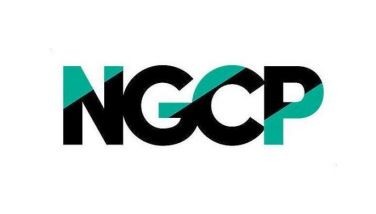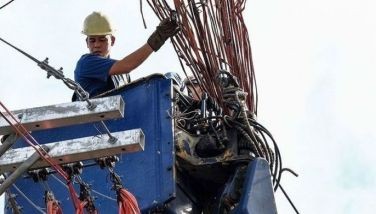PLDT, Smart building P1.4-B transmission backbone
MANILA, Philippines - Dominant carrier Philippine Long Distance Telephone Co. (PLDT) and wireless arm Smart Communications Inc. are spending P1.4 billion to put up a fiber optic cable transmission backbone that will land in Palawan.
Rolando Peña, head of network and IP systems of PLDT and Smart, said the backbone project would result in high-speed fixed and mobile Internet services like long term evolution (LTE), and at the same time enhance basic services like voice and text.
“This will not only enhance basic services like voice and text. It will also make possible high-speed, large-capacity fixed and mobile internet services like Smart’s LTE and PLDT’s fiber to the home service,” Peña stressed.
He pointed out that the new transmission network would have an initial capacity of 400 gigabytes per second once completed in the first half of next year. This is a huge expansion of the existing capacity of the digital radio transmission system currently serving the island province.
“Better communications will boost Palawan’s booming P4-billion tourism industry and also be a boon to schools, banks, hospitals, small businesses and government agencies which can operate more efficiently using fast and reliable communications,” he added.
The project involves laying down nearly 300 kilometers of undersea fiber optic cable from Iloilo to northern Palawan plus another 364 kilometers of cable inland to Puerto Princesa City.
He pointed out that the project would connect Palawan to PLDT’s nationwide domestic fiber optic transmission network.
“We call this our fiber advantage. Fiber optic networks are absolutely vital if you want to provide reliable advanced communication services. The PLDT Group has the most extensive and most modern fiber optic network in the country,” Pena explained.
Together with Digital Telecommunications of the Philippines (Digitel) and Sun Cellular, he said the PLDT Group is expanding its 54,000 kilometers of fiber optic cable that has been rolled out all over the country.
Fiber networks connect most of Smart’s base stations in Metro Manila and a growing number elsewhere in the country enabling the company to carry growing volumes of voice calls, short messaging system or text messages more reliably and to provide high-speed data services like LTE.
The first land-based transmission backbone serving Palawan was built by Smart in 2004 and uses microwave radio to transmit data making it possible for the company to offer multimedia messaging and mobile internet on top of voice calls and SMS.
High-speed communications is now essential for Palawan’s tourism business which has been growing rapidly in recent years. It is currently the country’s fifth leading tourist destination.
Palawan hopes to attract a million tourists by 2014 from about 700,000 this year. Data show that the number of tourists in Puerto Princesa especially those visiting the Underground River that was proclaimed as one of the world’s “Nature 7 Wonders of Nature” soared to 500,000 last year from only 160,000 in 2007.
- Latest
- Trending































